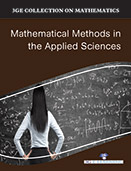Mathematics

Today's challenges faced by science and engineering are so complex that they can only be resolved with the help and participation of mathematical scientists. All three approaches to science, observation and experiment, theory, and modeling are desirable to understand the multifaceted phenomena considered today by scientists and engineers, and each approach requires the mathematical sciences. Mathematics and science have an intimate relationship that is of vital and increasing importance for both. Mathematics is an essential component of science, part of its fabric, its universal language and indispensable source of intellectual tools. Equally, science inspires and stimulates mathematics, posing new questions, engendering new ways of thinking, and ultimately conditioning the value system of mathematics. Fields such as physics and electrical engineering that have always been mathematical are becoming even more so. Presently observationalists are creating enormous data sets that can only be extracted and patterns distinguished by the use of deep statistical and imagining tools. Indeed, there is a need to fashion new tools and, at least initially, they will need to be fashioned specifically for the data involved. Such will require the scientists, engineers, and mathematical scientists to work closely together. Sciences that have not been heavily mathematical in the past---for example, biology, physiology, and medicine---are moving from description and taxonomy to analysis and explanation; many of their problems involve systems that are only partially understood and are therefore inherently uncertain, demanding exploration with new mathematical tools. Outside the traditional spheres of science and engineering, mathematics is being called upon to analyze and solve a widening array of problems in communication, finance, manufacturing, and business. Progress in science, in all its branches, requires close involvement and strengthening of the mathematical enterprise; new science and new mathematics go side by side.
Mathematical Methods in the Applied Sciences deals with mathematical methods for the consideration of linear and non-linear, direct and inverse problems for physical relevant processes over time- and space- varying media under certain initial, boundary, transition conditions etc. Most people, mathematicians and others, will agree that mathematics is not an empirical science, or at least that it is practiced in a manner which differs in several decisive respects from the techniques of the empirical sciences. And, yet, its development is very closely linked with the natural sciences. Mathematical models lead to “virtual experiments” whose real-world analogues would be expensive, dangerous, or even impossible; they obviate the need to actually crash an airplane, spread a deadly virus, or witness the origin of the universe. Mathematical models help to clarify relationships among a system's components as well as their relative significance. This book is appropriate for undergraduate and graduate students in a variety of scientific and engineering fields.